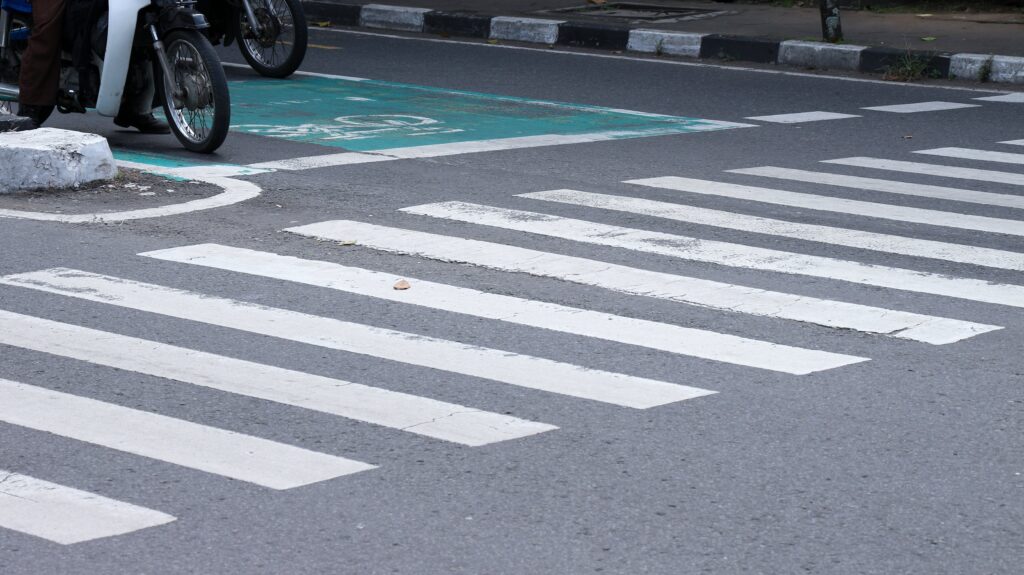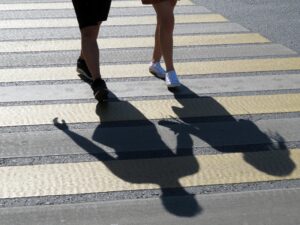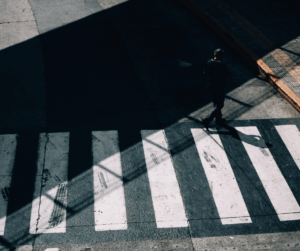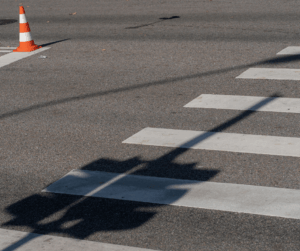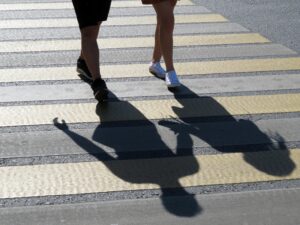 How Much Compensation Can You Get for a Pedestrian Accident in New York?
How Much Compensation Can You Get for a Pedestrian Accident in New York?
When a pedestrian is struck by a vehicle, there is no contest between human vulnerability and the force of a moving car. With no protection against impact, pedestrians are often left with life-altering or even fatal injuries. These collisions are among the most devastating on New York’s roads, not only physically, but emotionally and financially as well.
If you or someone you love has been hit by a vehicle, it is important to understand how these injuries are classified, how they affect recovery, and what legal options may be available. At Greenspan & Greenspan Injury Lawyers, we represent clients for pedestrian accident injuries across New York. We take your recovery seriously and guide you through the legal process, so you can concentrate on your recovery.
Why Pedestrian Accidents Are So Dangerous
In vehicle collisions, car occupants benefit from seat belts, airbags, and steel frames. Pedestrians have none of these protections. That makes the risk of serious harm significantly higher, even in lower-speed impacts.
Many victims suffer multiple types of trauma in a single crash. Some injuries are visible immediately. Others develop or worsen in the days following the incident. No matter how you feel in the moment, seeking medical attention is critical after any pedestrian crash.
Here’s a look at some of the most common pedestrian accident injuries we see.
1. Head and Brain Injuries
Among the most serious and life-threatening consequences of pedestrian crash trauma are those affecting the brain. These include:
- Concussions,
- Skull fractures,
- Hemorrhages and brain bleeds, and
- Traumatic brain injuries (TBI).
The effects may range from short-term confusion to permanent cognitive disability. In many cases, brain trauma affects speech, memory, coordination, and emotional stability.
2. Spinal Cord and Back Injuries
When a car hits a pedestrian, the force of the impact can compress, fracture, or displace parts of the spine. This impact can result in:
- Herniated or bulging discs,
- Nerve impingement,
- Partial or full paralysis, and
- Loss of sensation or motor function.
Even if surgery is successful, some spinal injuries lead to lifelong discomfort or reduced mobility.
3. Bone Fractures
Broken bones are some of the most commonly reported injuries from being hit by a car. Depending on how the body absorbs the impact, common fracture sites include:
- Legs and ankles,
- Arms and wrists,
- Pelvis or hip,
- Ribs and clavicle, and
- Facial bones and skull.
Some fractures heal with casting and time. Others require internal fixation with rods, screws, or plates and may still result in complications like chronic pain or arthritis.
4. Internal Organ Damage
Another one of the most dangerous consequences of pedestrian crash trauma is internal injury. Unlike external wounds, these are not always visible and can be fatal if untreated. Examples include:
- Punctured lungs;
- Internal bleeding;
- Damage to kidneys, liver, or spleen; and
- Abdominal swelling or rupture.
These injuries may require emergency surgery and extended hospital stays, increasing both the medical burden and long-term risks.
5. Soft Tissue Injuries
While often characterized as less severe, soft tissue injuries can be painful, debilitating, and slow to heal. Examples of soft tissue injuries include:
- Torn ligaments or tendons,
- Severe bruising and contusions,
- Muscle tears, and
- Whiplash or strain-related injuries.
In some cases, victims may develop long-term pain syndromes that limit mobility or daily functioning.
6. Facial and Dental Injuries
When pedestrians fall forward during impact or land face-first after being thrown, serious facial injuries can result:
- Broken jaw or orbital bones,
- Lost or damaged teeth,
- Eye trauma,
- Severe lacerations or road rash, and
- Facial nerve damage.
Beyond physical pain, facial injuries can lead to emotional trauma and significant medical costs due to reconstruction or cosmetic surgery.
7. Emotional and Psychological Injuries
Not all harm is physical. Survivors of pedestrian accidents often experience lasting psychological effects, including:
- Post-traumatic stress disorder (PTSD),
- Anxiety about crossing streets or walking near traffic,
- Depression or isolation during recovery,
- Sleep disturbances, and
- Survivor’s guilt (especially when other victims are involved).
These injuries deserve recognition and treatment. Therapy, medication, and mental health support are all part of a comprehensive recovery plan.
When a Car Hits a Pedestrian, Injury Types Vary by Circumstance
The type of injury often depends on how the pedestrian was struck. For instance:
- Side impacts often cause hip, leg, or knee damage;
- Frontal impacts may result in head, chest, and abdominal trauma; and
- Thrown or dragged victims may suffer severe skin abrasions, spinal injuries, and internal organ damage.
Every crash is unique. That is why a thorough medical evaluation is essential, even if you believe your injuries are seemingly minor.
Long-Term Consequences of Pedestrian Hit by Car Injuries
Some injuries may heal in weeks, while others result in permanent disability. Common long-term impacts in pedestrian accidents include:
- Difficulty walking or standing,
- Limited range of motion,
- Need for mobility aids or personal assistance,
- Inability to return to work or engage in previous activities, and
- Chronic pain management requirements.
When building a legal claim, it is essential to consider not just current medical expenses but also the lasting effects of the injury.
What to Do After a Pedestrian Injury
If you are able to do so safely, take these steps after a pedestrian accident:
- Call 911 for immediate medical attention and to create a police report;
- Get names and contact information for the driver and any witnesses;
- Do not discuss fault at the scene;
- Take photos of the location, traffic signals, injuries, and vehicle damage;
- Seek medical attention, even for minor discomfort; and
- Contact an attorney before giving a statement to any insurance company.
Your actions in the first hours and days following the crash may have a lasting impact on your physical and financial recovery. Despite what the driver’s insurance will lead you to believe, it’s best to contact an attorney immediately after a pedestrian accident.
Contact Greenspan & Greenspan Injury Lawyers
If you or a loved one has suffered serious pedestrian accident injuries, you deserve support and guidance. You may be dealing with surgeries, physical therapy, missed work, and ongoing pain. On top of that, you may be fielding calls from insurance companies hoping to close your case quickly and for less than it may be worth.
Let us handle that part. At Greenspan & Greenspan, we have represented New York injury victims since 1959. We take the time to understand your injuries, assess the full impact on your life, and pursue the maximum compensation available under the law.
Call us today for a free consultation and let us help you take the next step forward.

